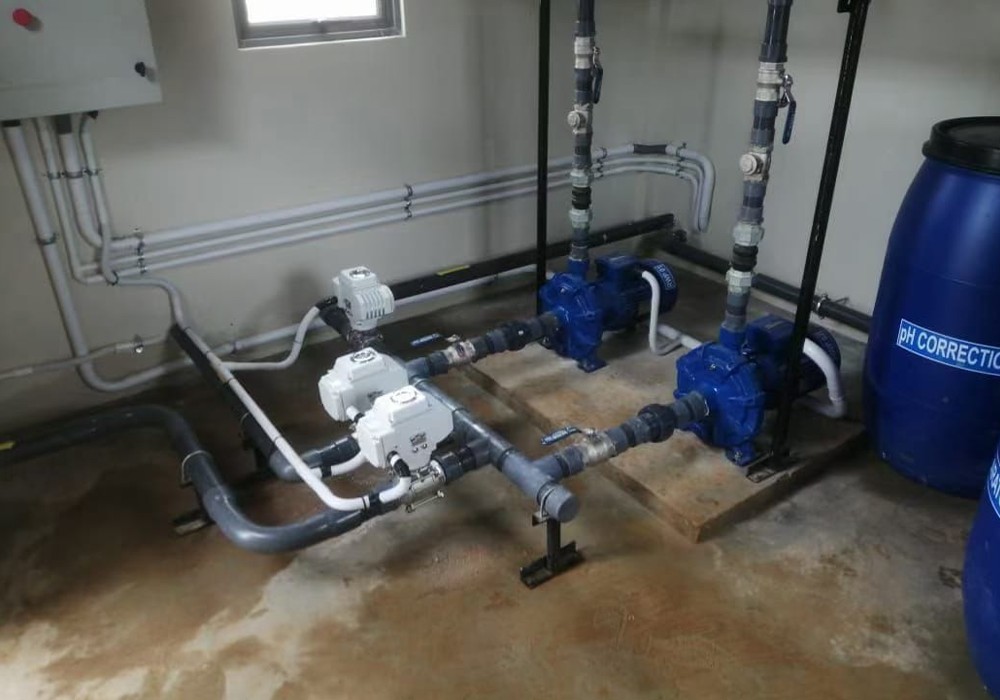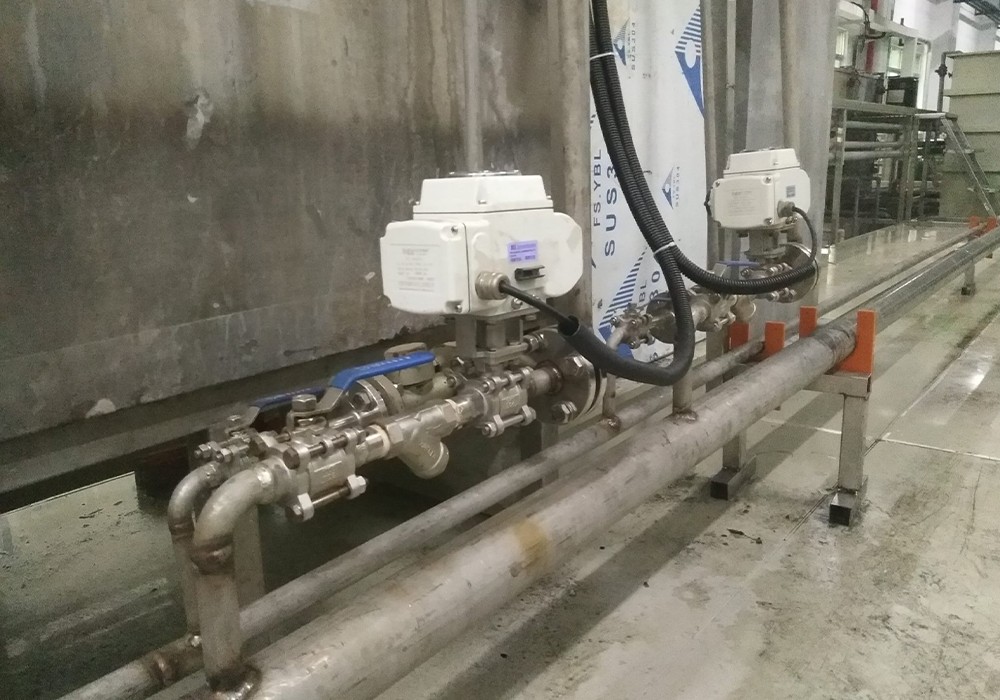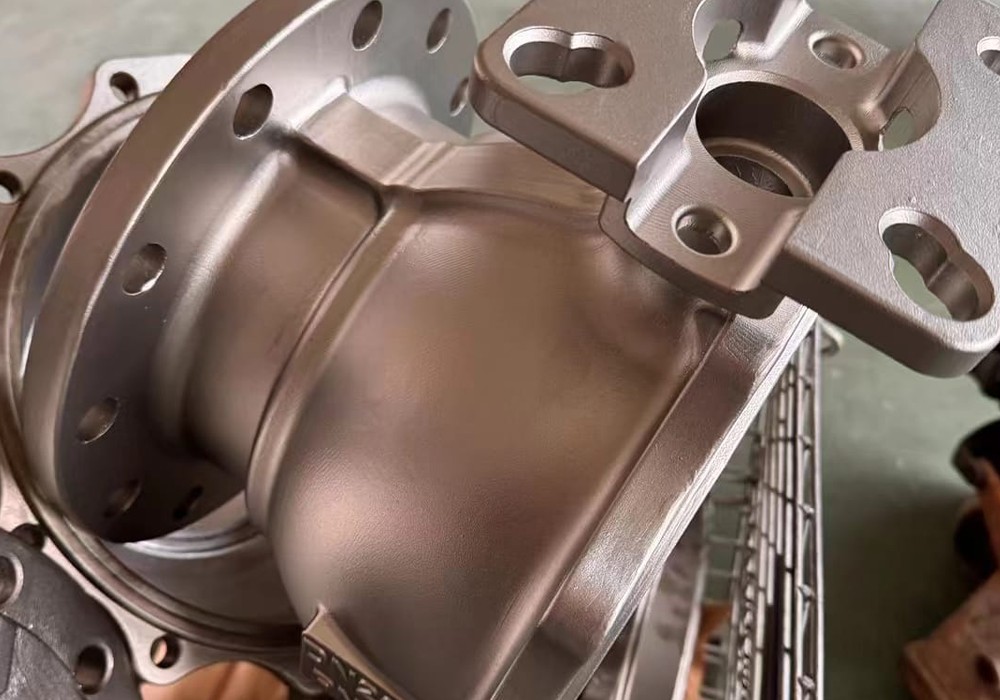How a Ball Valve Works
Introduction
Ball valves are one of the most commonly used valves in industrial, commercial, and residential piping systems. Their simple yet effective design allows for reliable flow control with minimal leakage. If you are an engineer, a maintenance worker, or a buyer, knowing how a ball valve works is important. This knowledge helps you choose the right valve for your needs.
In this article, we will explain how ball valves work. We will cover their types, benefits, and common uses. This will help you make informed choices.
What Is a Ball Valve?

A ball valve operates by rotating a spherical ball within it. This ball rotates a quarter turn to control the flow of fluid in a pipe system. It uses a hollow, perforated ball to control the flow of liquids or gases in a pipeline.
The valve opens and allows fluid to flow through when the ball's hole aligns with the flow path. When the valve handle or actuator turns the ball 90 degrees, the hole is perpendicular to the flow path. This blocks the flow completely.
This design provides a quick and easy way to start or stop fluid flow.
How Does a Ball Valve Work?
Basic Working Principle
• Open state: The valve's internal ball features a drilled hole (bore) through it. When you turn the handle to align the hole with the pipeline, fluid flows freely.
• Closed position: Rotating the handle 90 degrees turns the ball so that the solid side blocks the flow path, stopping fluid completely.
The valve’s sealing surfaces ensure tight closure and prevent leakage when shut.
Key Components:
• Ball: The spherical component with a hole through its center.
• Valve Body: The outer shell holding the ball and other parts.
• Seats: Usually made from soft materials (like PTFE), these create a tight seal between the ball and valve body.
• Stem: Connects the ball to the handle or actuator for rotation.
• Handle/Actuator: The external lever or motorized device used to rotate the ball.

Operation Steps:
• Rotate the valve handle by 90 degrees to transition the valve between its fully open and fully closed positions.
• When open, liquid passes directly through the empty sphere.
• When closed, the ball blocks flow completely, ensuring no leaks.
Types of Ball Valves Based on Design
Engineers design several types of ball valves to suit different industrial needs.
• Floating Ball Valve: The ball is not fixed but "floats" between two seats, sealing tighter under pressure. In this design, the valve closes by allowing the ball to shift slightly downstream, pressing against the seat to enhance the seal. Manufacturers typically use this type for smaller to medium-sized valves operating under moderate pressures.
• Trunnion Ball Valve: The ball is fixed with a shaft (trunnion) to reduce torque and handle high-pressure flows. The trunnion supports the ball from the top and bottom, limiting movement and reducing wear. Engineers prefer this design for large-diameter and high-pressure applications.

• Full Port vs Reduced Port: Full port valves have a bore equal to the pipe diameter, allowing full flow with minimal pressure drop. Reduced port valves have a smaller bore than the pipe, causing some flow restriction but allowing for more compact valve design and reduced cost.
• Multi-way Ball Valves: These valves have multiple flow paths (such as 3-way or 4-way) and can direct flow in different directions. Engineers often use them in complex piping systems that require flow diversion or mixing.
Advantages of Ball Valves
Many applications favor ball valves because of several key advantages:
• Quick Operation: The valve opens or closes fully with a simple 90-degree turn of the handle. This allows for quick control of flow or shutting off the system.
• Tight Sealing: The spherical ball and soft seats create a secure seal that prevents leaks, ensuring reliable shutoff.
• Durability: With fewer moving parts and robust construction, ball valves typically have long service lives with minimal maintenance.
• Versatility: Ball valves are compatible with a wide range of media, including water, oil, gas, corrosive fluids, and slurries.
• Minimal Pressure Drop: Full port ball valves allow fluid to flow with minimal resistance, preserving system efficiency.
• Low Torque Requirements: This reduces actuator sizes and manual effort.

Common Applications of Ball Valves
Ball valves are used across diverse industries, including but not limited to:
• Oil and Gas: Used for shutting off pipelines, refining processes, and offshore platforms. They seal well under high pressure and in corrosive conditions.
• Chemical Processing: Resistant to aggressive chemicals, ideal for hazardous media control.
• Water and Wastewater Treatment: Efficient isolation and control of water flow in municipal and industrial plants.
• HVAC Systems: Control of chilled water and heating circuits.
• Food and Beverage: We use sanitary ball valves made from special materials where hygiene and easy cleaning are critical.
• Pharmaceuticals: Precise flow control with sanitary designs ensuring no contamination.
Installation and Maintenance Tips
To ensure optimal performance and longevity of your ball valve:
• Correct Installation: Install valves in accessible locations for operation and maintenance. Ensure flow direction matches valve markings if applicable.
• Control manual or actuator torque to avoid damaging seats or stem.
• Regular Operation: Periodically cycle valves to prevent seizing, especially in infrequent use applications.
• Inspect for leaks by regularly checking packing and seat integrity, and replace seals if you detect leakage.

Comparing Ball Valves to Other Valve Types
• Gate Valves: Offer throttling but are slower to operate and have more parts. Ball valves are better for quick shutoff.
• Butterfly Valves: Often used for larger diameters but provide less tight sealing compared to ball valves.
• Globe Valves: Provide precise flow control but with higher pressure drops and slower operation.
• Plug Valves: Similar quarter-turn operation but ball valves generally have better sealing performance and durability.
How to Choose the Right Ball Valve for Your Needs
When selecting a ball valve, consider the following factors carefully:
• Material Compatibility: Ensure valve body and seats are compatible with the fluid type, temperature, and pressure. For example, stainless steel for corrosive fluids, brass for water, or special alloys for aggressive chemicals.
• Size and Flow Requirements: Match valve bore size to your pipeline diameter and desired flow rate. Full port valves minimize flow resistance.
• Pressure and Temperature Ratings: Verify the valve can safely handle your system’s maximum operating conditions.

• Connection Types: Choose threaded, flanged, welded, or socket weld ends according to your piping system design and installation convenience.
• Operation Mode: Decide between manual handle operation or automated actuators (electric, pneumatic, hydraulic) based on system control needs.
• Check for valves that meet API, ANSI, ISO, or other important standards. This ensures quality and compliance.
Innovations and Future Trends in Ball Valve Technology
With the rapid advancement of industrial automation and smart manufacturing, ball valve technology continues to evolve to meet increasingly complex application demands. Modern ball valves are trending towards:
• Intelligent Control
- Electric or pneumatic actuators can be used with sensors.
- These systems allow for remote monitoring.
- They enable real-time tracking of valve status, flow, and pressure. This enables digital management and remote operation in modern plants.
• Manufacturers use new materials that resist corrosion and wear in valve seats and bodies. These materials help valves last longer and work better in tough conditions. This includes chemical processing, offshore environments, and high temperature and pressure situations.
• Eco-Friendly and Energy-Saving Designs: Optimized internal flow channels reduce pressure drop and energy consumption while improving sealing performance and operational safety.
• Modular and Customized Solutions: Manufacturers offer modular ball valve designs. • Manufacturers can quickly assemble or customize these valves to fit different industrial needs. This approach reduces delivery times and increases flexibilit
These innovations improve valve performance. They also help customers lower maintenance costs. Additionally, they enhance system safety and reliability.
Practical Tips for Purchasing Ball Valves
For procurement managers and engineers, choosing the right ball valve is critical for system efficiency and safety. Here are some practical tips to consider when purchasing ball valves:
• Confirm Technical Specifications: Carefully verify valve pressure ratings, temperature limits, media compatibility, and flow requirements to ensure the valve meets your operational conditions.
• Select Certified Suppliers: Opt for valves with ISO, API, CE, or other relevant certifications to guarantee manufacturing quality and compliance with international standards.
• Prioritize After-Sales Service: Choose manufacturers who offer reliable technical support, quick delivery of spare parts, and maintenance services. This helps reduce the risk of downtime.
• Consider Installation Environment: Choose the valve type that fits your site’s available space. Decide whether manual or automated operation best suits your system needs.
• Inquire About Customization Capabilities: If your project has special requirements, partnering with a manufacturer that offers custom design and fabrication ensures tailored solutions.
By following these guidelines, you can ensure long-term stable operation, minimize failure risks, and maximize your investment returns.
Why Choose Our Ball Valves?
We are a top ball valve manufacturer. We apply advanced engineering and strict quality control. This ensures our valves meet international standards. Our products offer:
• Precision machining for tight tolerances and perfect sealing.
• High-grade materials resistant to corrosion and wear.
• Variety of designs to meet diverse industry needs — from small-size floating ball valves to large trunnion ball valves.
• Customization options for pressure ratings, sizes, and connection types.
• Certified testing ensuring performance and safety, including hydrostatic pressure testing and leakage rate verification.
• Responsive after-sales support and technical consultation.
Customers worldwide trust our valves for their reliable performance and long service life in demanding industries.
Contact us today to discuss your project requirements and receive expert advice tailored to your application.
Conclusion
Understanding how a ball valve works helps you appreciate its efficiency and reliability in controlling fluid flow. With their simple mechanism, strong sealing, and quick operation, ball valves are indispensable in modern piping systems.
Choosing the right ball valve requires careful consideration of design, material, and operating conditions. When paired with a reputable manufacturer, you gain valves that provide excellent performance and peace of mind.
When you need durable, high-quality ball valves manufactured with precision, trust our expertise and product range. Let us help you find the perfect valve solution for your industrial needs.
FAQ
Q1: Can ball valves be used for throttling?
A1: Ball valves mainly control flow by fully opening or closing. Using them partially open can damage the valve seats and cause wear, so manufacturers do not recommend it.
Q2: What is the difference between floating and trunnion ball valves?
A2: Floating ball valves rely on the ball moving slightly to seal against the downstream seat, suitable for lower pressures. Trunnion ball valves have shafts that support and hold the ball securely. This design allows them to handle higher pressures and larger sizes.
Q3: How do I maintain a ball valve?
A3: Regular inspection for leaks, cycling the valve periodically, and replacing worn seats or seals can prolong valve life. Lubrication of the stem may also be necessary for smooth operation.
Q4: What materials are commonly used in ball valves?
A4: Common materials include stainless steel, carbon steel, brass, PVC, and specialized alloys for corrosive environments. Seat materials often use PTFE or other polymers for sealing.













